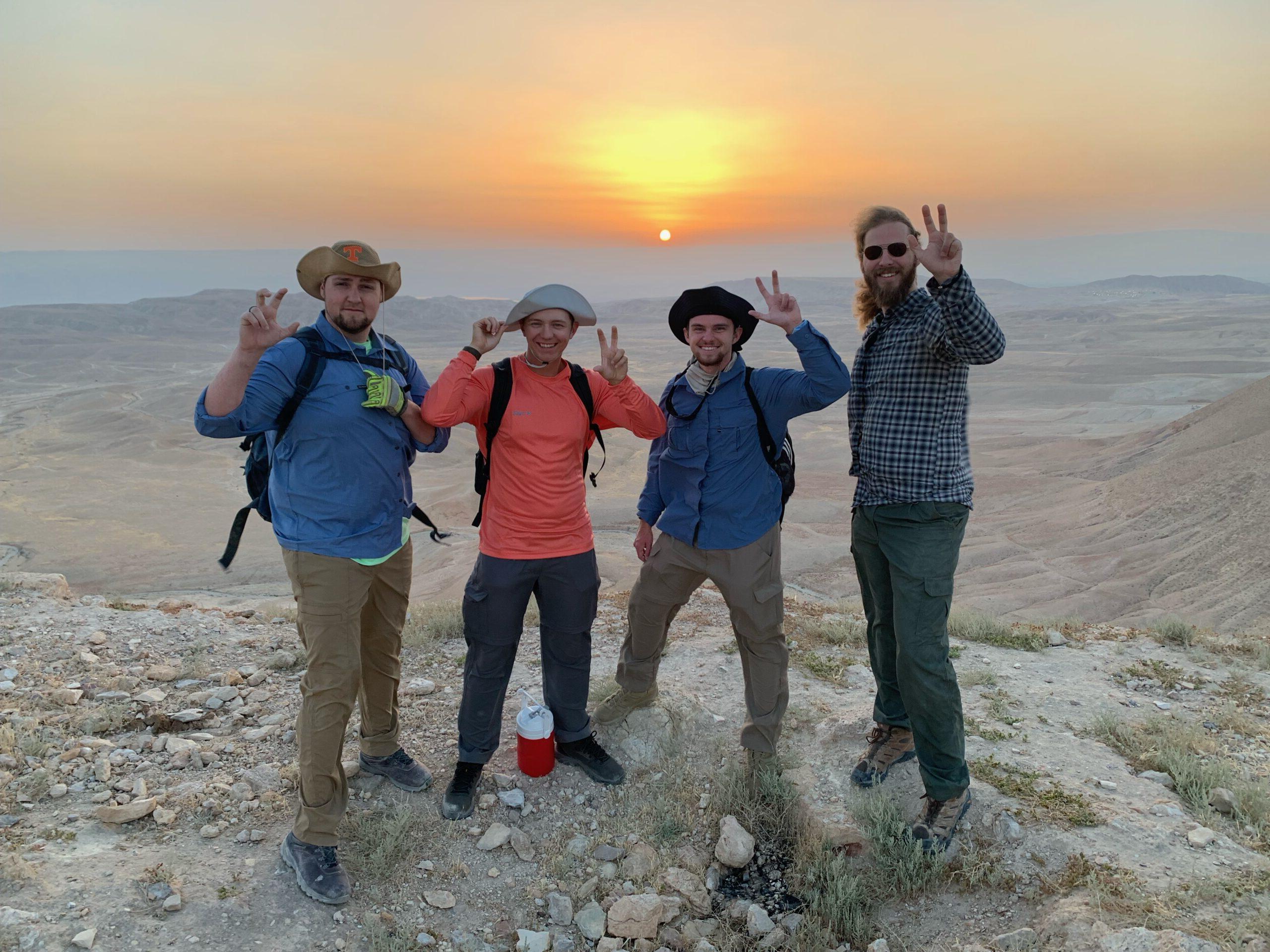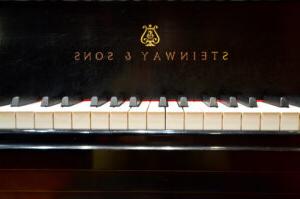
Historic archeological dig connects Judean Desert to East Tennessee

A child-sized ring, measuring only about 1 cm. in diameter, tells the story of a distant past, but also the future of a university program.
The gold circular object inlaid with a turquoise stone, is one of several items discovered during an initial groundbreaking excavation project in the northern Judean Desert – more specifically, the ruins of Herod the Great’s desert fortress, Hyrcania.
Carson-Newman University, in support of the Hebrew University of Jerusalem’s Institute of Archeology and in collaboration with the American Veterans Archeological Recovery (AVAR), united this summer on the site. The effort is already yielding significant results. The earliest phase of the fortress, located on a remote, commanding hilltop, dates to the late 2nd or early 1st century BCE: the Hasmonean dynasty. It was later rebuilt and enlarged by Herod the Great. No methodological or scientific archeological excavation had ever taken place at the location – until now.
The reality of it all quickly excites Carson-Newman’s Drs. David Crutchley and Marshall King.
“It puts us in the know – to have Carson-Newman linked with Hebrew University is huge,” said Crutchley, who serves as dean of C-N’s School of Biblical and Theological Studies. This is the citadel of archeology.”
Sharing in the historic summer dig were four Carson-Newman students led by Rev. Bill Hild, an adjunct professor at the University. No stranger to getting his hands dirty, Hild has followed his passion for archeology on over 40 visits to the Middle East.
The unique opportunity stemmed from a new archeology minor at Carson-Newman. Though the University has a history of introducing students to archeology digs, most recently in southern Jordan, this is the first time of offering a minor to students.
King, who Crutchley credits as the minor’s architect, drew on his love and background in the field when helping develop the new offering. “There’s a lot of connection with archeology in the liberal arts setting,” King said. “It’s kind of a venue for different expertise to come together and work as a team towards a common goal.” The Carson-Newman professors believe the archeology minor has the potential of drawing students from disciplines across campus – whether they are studying history, sociology or computer science, the new offering is ripe for more than only biblical scholars.
“It’s a melting pot not only of expertise, but also cultures and that’s why I think there’s no replacement for archeology. There’s nothing like it,” King said. “I want our students to leave Carson-Newman knowing that the sky’s the limit and archeology gives them a view towards the limitlessness of their future.”
For rising senior and dig team member Jacob Easterday, the archeological experience uncovered unexpected personal potential.
“I suppose my takeaway is that it helped me mature, it helped me become more well-rounded and much more confident,” reflected Easterday, a biblical studies major, who is also minoring in Greek and archeology. “I mean, if you could go up to a mountain where you can see the Dead Sea, the Jordan, and you’re in the middle of the Judean desert and you’re digging up all these ancient stones, it really makes me confident in most other pursuits I have.”

Matthew Setsor, a C-N graduate student pursuing a Master of Divinity degree, said that what drew him was the opportunity to see the land connected to his Christian faith.
“It was incredible that I got to participate in this with some really neat people, but it was also overwhelming in a way too, because of the magnitude of where we were,” said Setsor, who plans to draw from the experience for his future work in ministry. “The geography of everything doesn’t make sense until you go there and see everything unfold before your eyes.”
While basking in the significance of the location, the Carson-Newman unit, along with Hebrew University and AVAR teams, helped the land give up secrets long held from generations. Of particular note, excavators unearthed a remarkable Christian inscription paraphrasing on Psalm 86:1-2. Written in Koine Greek, the language of the New Testament, the 6th century inscription is connected to a period in which a Christian monastery once sat on the site. Accompanied by a cross, the discovered text translated to: “Jesus Christ, guard me, for I am poor and needy.”
From revealing the monastery’s mosaic flooring, to unearthing an arch keystone believed to be built during the Second Temple period, each item has a story to tell. Because of that, the Carson-Newman group returned to East Tennessee with stories of their own – stories sure to be retold for a lifetime.
In a released joint statement, Excavation Directors Dr. Oren Gutfeld and Michal Haber of the Hebrew University remarked:
“By any measure, access to and actual excavation of Hyrcania is not a simple undertaking. Throughout the four-week excavation season, we would be impressed daily by the Carson-Newman University students’ enthusiasm, curiosity, thoughtful engagement and consistent hard work. Ultimately, our ‘pilot’ season turned out to be an extraordinary success, due to the fine team that assembled in the Judean Desert.”
With more to be discovered, Hild is ready to lead the next cohort of students to the archeological site next spring. With access to such a historically significant dig site, the revitalized archeology program and new minor at Carson-Newman is perfect for those interested in connecting with the past and interested in what potential lies just below the surface.
“Ancient history is our history,” said Hild, standing with an i24NEWS crew at the site. “And so as we discover history, we make history. And we kind of feel like we are making history here.”



